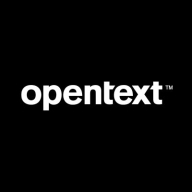

OpenText SiteScope and SolarWinds Server and Application Monitor compete in the server and application monitoring category. SolarWinds appears to have the upper hand in feature richness and user satisfaction based on user reviews and comparisons.
What features are offered by OpenText SiteScope in comparison to SolarWinds Server and Application Monitor?OpenText SiteScope offers extensive monitoring capabilities, flexibility in configuration, and customizable thresholds. SolarWinds Server and Application Monitor provides automatic detection, comprehensive dashboards, and detailed performance analysis. SolarWinds has a richer feature set and higher user satisfaction.
What areas of improvement can be found in OpenText SiteScope in comparison to SolarWinds Server and Application Monitor?OpenText SiteScope needs a more intuitive and modern interface, better integration with other tools, and enhanced usability. SolarWinds requires improvements in stability, more customizable reporting, and reduced complexity in some features. SiteScope's UI overhaul is more notably required.
How is the ease of deployment and customer service of OpenText SiteScope in comparison to SolarWinds Server and Application Monitor?OpenText SiteScope's deployment process is straightforward but can be time-consuming; customer service receives mixed reviews. SolarWinds has a smoother deployment experience and reliable customer support, with higher satisfaction in both areas.
What setup costs and ROI can be seen with OpenText SiteScope in comparison to SolarWinds Server and Application Monitor?OpenText SiteScope is a higher initial investment but provides a good return on investment over time. SolarWinds offers value at a competitive price point with faster ROI. Users generally perceive that SolarWinds provides better ROI and pricing benefits.
| Product | Market Share (%) |
|---|---|
| SolarWinds Server and Application Monitor | 1.2% |
| OpenText SiteScope | 0.6% |
| Other | 98.2% |


| Company Size | Count |
|---|---|
| Small Business | 8 |
| Midsize Enterprise | 4 |
| Large Enterprise | 20 |
| Company Size | Count |
|---|---|
| Small Business | 17 |
| Midsize Enterprise | 8 |
| Large Enterprise | 21 |
OpenText SiteScope is an agentless monitoring program that tracks the availability and performance of distributed IT infrastructures such as servers, network devices and services, applications and application components, virtualization software, operating systems, and other IT enterprise components.
OpenText SiteScope is an autonomous hybrid IT monitoring system that can monitor more than 100 different types of IT components in real time, thanks to a lightweight and highly customizable remote access architecture.
With OpenText SiteScope, IT teams can get the data they need to keep on top of problems and eliminate bottlenecks before they become major concerns.
OpenText SiteScope can reduce total cost of ownership (TCO) by utilizing agentless technology, which eliminates the need to install and monitor agents on each box. Manual activities can be automated, and teams can save time and effort by using pre-packaged solution templates.
OpenText SiteScope Features
OpenText SiteScope has many valuable key features. Some of the most useful ones include:
SolarWinds Server & Application Monitor (SAM) delivers powerful application and server monitoring capabilities for IT pros, enabling them to diagnose and troubleshoot performance issues faster. Do not let slow applications and downtime impact your end-users and business services. Pinpoint the root cause of application issues across various layers of the IT stack. SolarWinds SAM is affordable and easy to deploy, use, and customize. You can automatically discover your system's environment and start monitoring in about an hour. No professional services or consultation needed.
We monitor all Application Performance Monitoring (APM) and Observability reviews to prevent fraudulent reviews and keep review quality high. We do not post reviews by company employees or direct competitors. We validate each review for authenticity via cross-reference with LinkedIn, and personal follow-up with the reviewer when necessary.